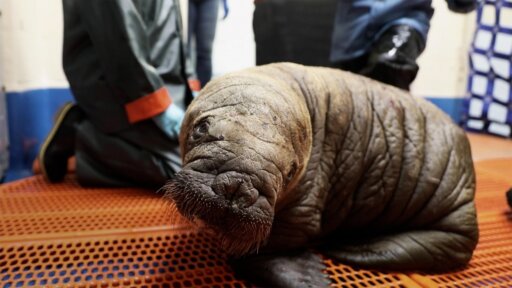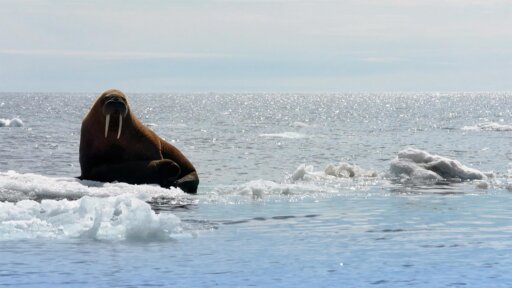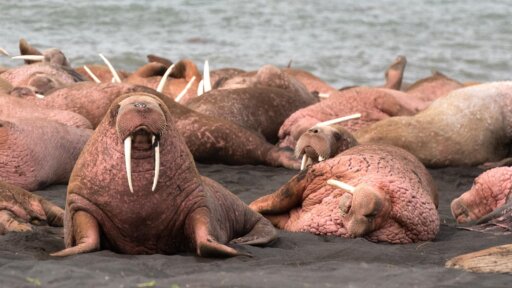It was once believed that walruses dug for clams with their tusks—but the truth is even stranger. They actually use their powerful tongues, like a piston, to suck clams right out of their shells.
Features



- People used to think that walrus use their tusks to dig for clams, like bears use their claws.
But we now know they use their tongue like a piston, to squirt a powerful jet of water that blasts away the mud to expose the buried clams.
And they use their super sensitive whiskers to find their tasty treasure.
So what the walrus does, is it literally puts the clam in its lips, like that, and then sucks.
And the walrus sucks at least the siphon out of the clam and sometimes the entire clam body.
Then they'll spit the empty shell back onto the bottom of the sea floor and go for another clam.
And some walruses, like the ones we saw on Round Island, can do something like 5,000 clams a day.
So if you do a quick thumbnail calculation, there's around 250,000 walruses eating 5,000 clams each.
That's well over a billion clams a day.
It's hard to believe there could be so much life in this desolate ice world.
(water splashing) But sea ice hides an incredible secret.
Living on the underside of the ice are millions of microscopic organisms.
Sea ice algae.
They harness energy from the sun to grow, just like grass.
The animals that graze here are tiny shrimp-like creatures called amphipods.
Predators then eat the amphipods and the food chain continues.
Ice algae is also essential to life on the sea floor.
When the ice melts, the algae sinks to the bottom and feeds other animals, including clams, that walrus depend on.
You May Also Like






